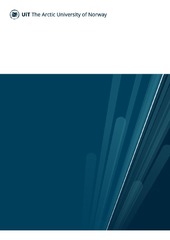| dc.contributor.advisor | Katalin, Blix | |
| dc.contributor.author | Asim, Muhammad | |
| dc.date.accessioned | 2023-03-19T16:09:27Z | |
| dc.date.available | 2023-03-19T16:09:27Z | |
| dc.date.embargoEndDate | 2028-03-31 | |
| dc.date.issued | 2023-03-31 | |
| dc.description.abstract | <p>This thesis addresses various aspects of monitoring water quality indicators (WQIs) using optical remote sensing technologies. The dynamic nature of aquatic systems necessitate frequent monitoring at high spatial resolution. Machine learning (ML)-based algorithms are becoming increasingly common for these applications. ML algorithms are required to be trained by a significant amount of training data, and their accuracy depends on the performance of the atmospheric correction (AC) algorithm being used for correcting atmospheric effects. AC over open oceanic waters generally performs reasonably well; however, limitations still exist over inland and coastal waters. AC becomes more challenging in the high north waters, such as the Barents Sea, due to the unique in-water optical properties at high latitudes, long ray pathways, as well as the scattering of light from neighboring sea ice into the sensors’ field of view adjacent to ice-infested waters.
<p>To address these challenges, we evaluated the performances of state-of-the-art AC algorithms applied to the high-resolution satellite sensors Landsat-8 Operational Land Imager (OLI) and Sentinel-2 Multispectral Instrument (MSI), both for high-north (Paper II) and for global inland and coastal waters (Paper III). Using atmospherically corrected remote sensing reflectance (<i>R<sub>rs</sub></i> ) products, estimated after applying the top performing AC algorithm, we present a new bandpass adjustment (BA) method for spectral harmonization of <i>R<sub>rs</sub></i> products from OLI and MSI. This harmonization will enable an increased number of ocean color (OC) observations and, hence, a larger amount of training data. The BA model is based on neural networks (NNs), which perform a pixel-by-pixel transformation of MSI-derived <i>R<sub>rs</sub></i> to that of OLI equivalent for their common bands. In addition, to accurately retrieve concentrations of Chlorophyll-a (Chl-a) and Color Dissolved Organic Matter (CDOM) from remotely sensed data, we propose in the thesis (Paper 1) an NN-based WQI retrieval model dubbed Ocean Color Net (OCN).
<p>Our results indicate that <i>R<sub>rs</sub></i> retrieved via the Acolite Dark Spectrum Fitting (DSF) method is in best agreement with in-situ <i>R<sub>rs</sub></i> observations in the Barents Sea compared to the other methods. The median absolute percentage difference (MAPD) in the blue-green bands ranges from 9% to 25%. In the case of inland and coastal waters (globally), we found that OC-SMART is the top performer, with MAPD <30% in the visible bands. It is also demonstrated that the proposed BA method achieves better spectral consistency between OLI and MSI-derived <i>R<sub>rs</sub></i> products for varying optical regimes than previously presented methods.
<p>Additionally, to improve the analysis of remote sensing spectral data, we introduce a new spatial window-based match-up data set creation method which increases the training data set and allows for better tuning of regression models. Based on comparisons with in-water measured Chl-a profiles in the Barents Sea, our analysis indicates that the MSI-derived <i>R<sub>rs</sub></i> products are more sensitive to the depth-integrated Chl-a contents than near-surface Chl-a values (Paper I). In the case of inland and coastal waters, our study shows that using combined OLI and BA MSI-derived <i>R<sub>rs</sub></i> match-ups results in considerable improvement in the retrieval of WQIs (Paper III).
<p>The obtained results for the datasets used in this thesis illustrates that the proposed OCN algorithm shows better performance in retrieving WQIs than other semi-empirical algorithms such as the band ratio-based algorithm, the ML-based Gaussian Process Regression (GPR), as well as the globally trained Case-2 Regional/Coast Colour (C2RCC) processing chain model C2RCC-networks, and OC-SMART.
<p>The work in this thesis contributes to ongoing research in developing new methods for merging data products from multiple OC missions for increased coverage and the number of optical observations. The developed algorithms are validated in various environmental and aquatic conditions and have the potential to contribute to accurate and consistent retrievals of in-water constituents from high-resolution satellite sensors. | en_US |
| dc.description.doctoraltype | ph.d. | en_US |
| dc.description.popularabstract | Chlorophyll-a (Chl-a), a light-harvesting pigment found in phytoplankton, is considered a proxy for aquatic biomass in the water columns. An adequate amount of biomass is necessary for a healthy and productive aquatic ecosystem. However, abnormally high growth of biomass may be harmful, posing significant threats to public health, marine wildlife, and local economies. Due to the dynamic nature of aquatic systems, especially rivers, inland and coastal waters where a high spatial and temporal variability in Chl-a content may exist, understanding these ecosystems requires temporally frequent sampling of exact concentrations of Chl-a and other optically significant water constituents such as color dissolved organic matter (CDOM) and total suspended matter (TSM). Traditional ship-based sampling of these in-water constituents is time-consuming, infrequent, and costly, especially in the high north. Alternatively, ocean color (OC) remote sensing has proven to be an effective observation methodology for providing estimates of near-surface concentrations of in-water constituents in global aquatic systems.
Machine learning (ML)-based algorithms are increasingly being deployed for these applications. However, these algorithms require a significant amount of training data. Being an aquatic system in the high north, the Barents Sea is frequently covered by clouds in summer and experiences polar nights in the winter. This limits the OC observations to work with. In addition, the accuracy of ML-based algorithms depends on the performance of the atmospheric correction (AC) algorithm used for removing atmospheric effects from the satellite-received signal. AC becomes more challenging in the high north due to unique in-water optical properties, high solar zenith angles, and the scattering of light from neighboring sea ice into the sensors' field of view.
To address these challenges, we evaluated the performances of state-of-the-art AC algorithms applied to images acquired by high-resolution satellite sensors, i.e., Landsat-8 and Sentinel-2, in the high north as well as global waters. Using atmospherically corrected Landsat-8 and Sentinel-2 imagery, processed via a top-performing AC algorithm, we present a new spectral harmonization method to merge Landsat-8 and Sentinel-2 imagery to increase the number of OC observations and, hence, the training samples. To accurately estimate Chl-a and CDOM from remotely sensed data, we propped a neural network (NN)-based model, which is demonstrated to perform better than other empirical and ML-based algorithms. The proposed algorithms in this thesis contribute to ongoing research on developing new methods for deriving consistent data products from multiple satellite instruments. | en_US |
| dc.description.sponsorship | The research is funded by the following projects: The Nansen Legacy (RCN number 276730), CIRFA (RCN number 237906), and partners. | en_US |
| dc.identifier.isbn | 978-82-8236-516-1 (printed version) | |
| dc.identifier.isbn | 978-82-8236-517-8 (electronic/pdf version) | |
| dc.identifier.uri | https://hdl.handle.net/10037/28787 | |
| dc.language.iso | eng | en_US |
| dc.publisher | UiT Norges arktiske universitet | en_US |
| dc.publisher | UiT The Arctic University of Norway | en_US |
| dc.relation.haspart | <p>Paper I: Asim, M., Brekke, C., Mahmood, A., Eltoft, T. & Reigstad, M. (2021). Improving chlorophyll-a estimation from sentinel-2 (MSI) in the Barents Sea using machine learning. <i>IEEE Journal of Selected Topics in Applied Earth Observations and Remote Sensing, 14</i>, 5529-5549. Also available in Munin at <a href=https://hdl.handle.net/10037/21863>https://hdl.handle.net/10037/21863</a>.
<p>Paper II: Asim, M., Matsuoka, A., Ellingsen, P.G., Brekke, C., Eltoft, T. & Blix, K. (2022). A new spectral harmonization algorithm for landsat-8 and sentinel-2 remote sensing reflectance products using machine learning: a case study for the Barents Sea (European Arctic). <i>IEEE Transactions on Geoscience and Remote Sensing, 61</i>, 4200819. Published version not available in Munin due to publisher’s restrictions. Published version available at <a href=https://doi.org/10.1109/TGRS.2022.3228393>https://doi.org/10.1109/TGRS.2022.3228393</a>. Accepted manuscript version available in Munin at <a href=https://hdl.handle.net/10037/28578>https://hdl.handle.net/10037/28578</a>.
<p>Paper III: Asim, M., Matsuoka, A., Hafeez, S., Eltoft, T. & Blix, K. Spectral harmonization of Landsat-8 and Sentinel-2 remote sensing reflectance products for mapping Chlorophyll-a in coastal, lakes and inland waters. (Submitted manuscript). | en_US |
| dc.rights.accessRights | embargoedAccess | en_US |
| dc.rights.holder | Copyright 2023 The Author(s) | |
| dc.rights.uri | https://creativecommons.org/licenses/by-nc-sa/4.0 | en_US |
| dc.rights | Attribution-NonCommercial-ShareAlike 4.0 International (CC BY-NC-SA 4.0) | en_US |
| dc.subject | VDP::Technology: 500::Environmental engineering: 610 | en_US |
| dc.subject | VDP::Teknologi: 500::Miljøteknologi: 610 | en_US |
| dc.title | Optical remote sensing of water quality parameters retrieval in the Barents Sea | en_US |
| dc.type | Doctoral thesis | en_US |
| dc.type | Doktorgradsavhandling | en_US |


 English
English norsk
norsk

